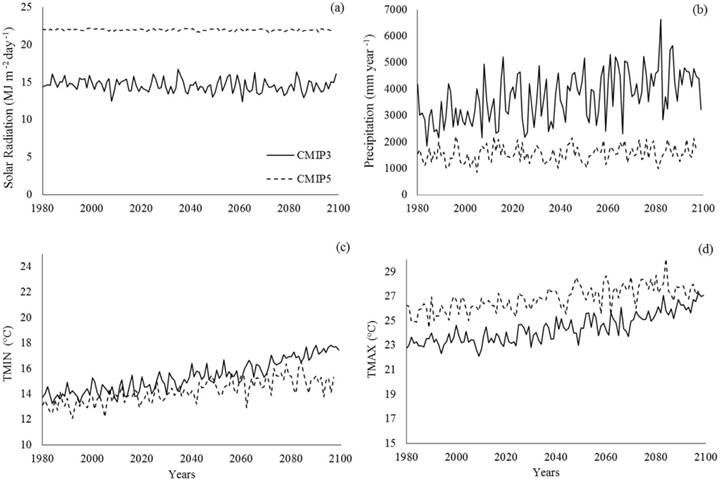ABSTRACT:
The objective of this study was to simulate the yield of two cassava cultivars in two IPCC future climate scenarios, the SRES-A1B (Cmip3) and the RCP4.5 (Cmip5), for the state of Rio Grande do Sul, Brazil. The Simanihot model, with the Thornthwaite and Mather water balance sub-model, and the SRES-A1B (Cmip3 - Third Coupled Model Intercomparison Project) and RCP4.5 (Cmip5 - Fifth Coupled Model Intercomparison Project) scenarios of the Fourth and Fifth IPCC Assessment Report, respectively, was used. Cassava cultivars used in this study were 'Fepagro - RS13' (forrage) and 'Estrangeira' (human consumption). In both cultivars, there was an increase in tuberous roots yield in future climate scenarios. The cultivar for human consumption benefits more roots yield in the scenario with higher CO2 (Cmip3 scenario); whereas, the forage cultivar benefits more the Cmip5 scenario. Among the three future periods (2010-2039, 2040-2069 e 2070-2099), changes in tuberous roots yield are more evident in the end of the century period (2070-2099) and for early planting dates (01 September and 01 October). The northeastern region of the state has the greatest changes in tuberous roots yield in future climates, because this is the coldest region, with winter minimum temperature during between 6 and 8oC.
Key words:
Simanihot; agricultural modeling; elevated temperature; elevated CO2

 Thumbnail
Thumbnail
 Thumbnail
Thumbnail
 Thumbnail
Thumbnail
 Thumbnail
Thumbnail
 Thumbnail
Thumbnail
 Thumbnail
Thumbnail





